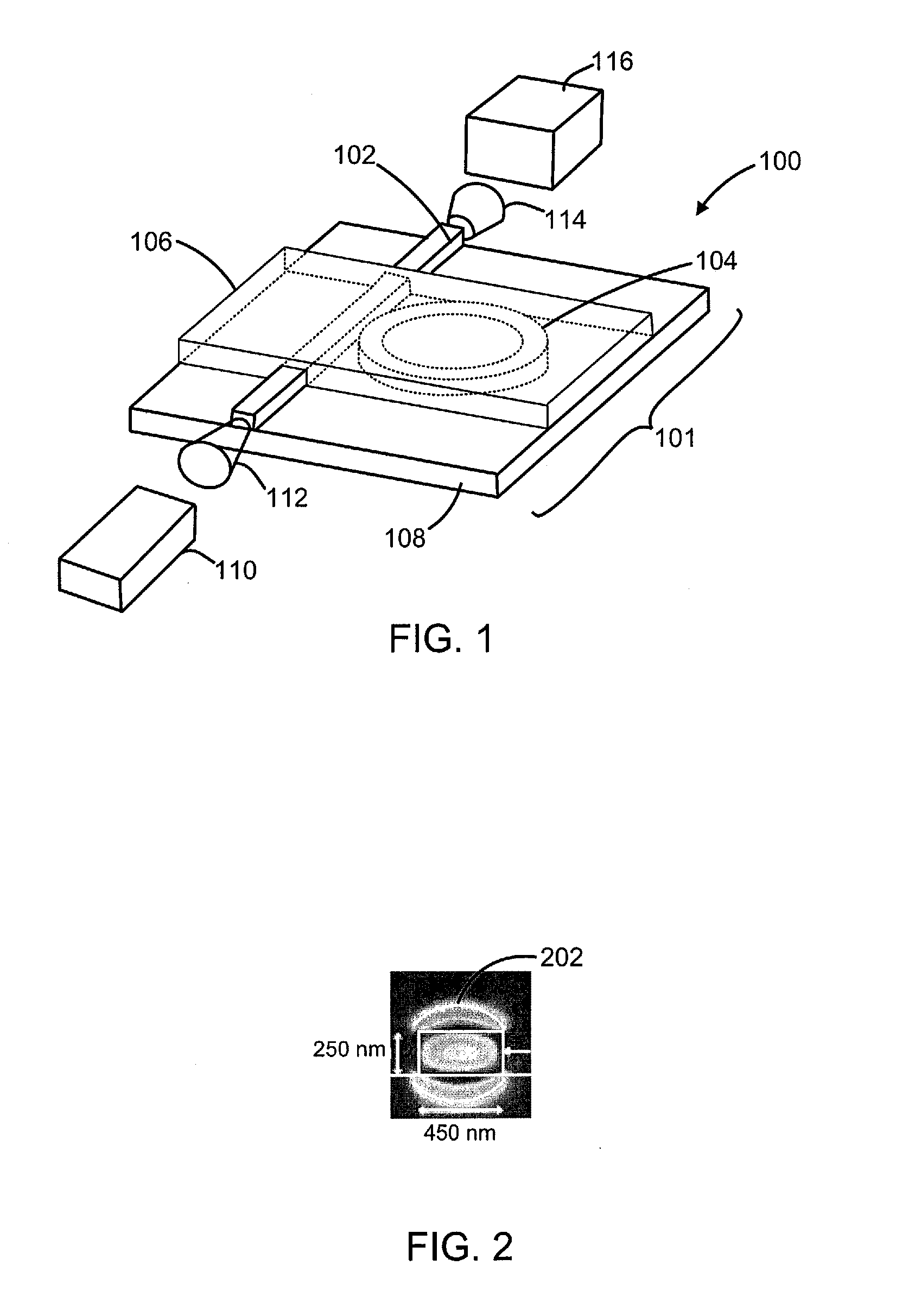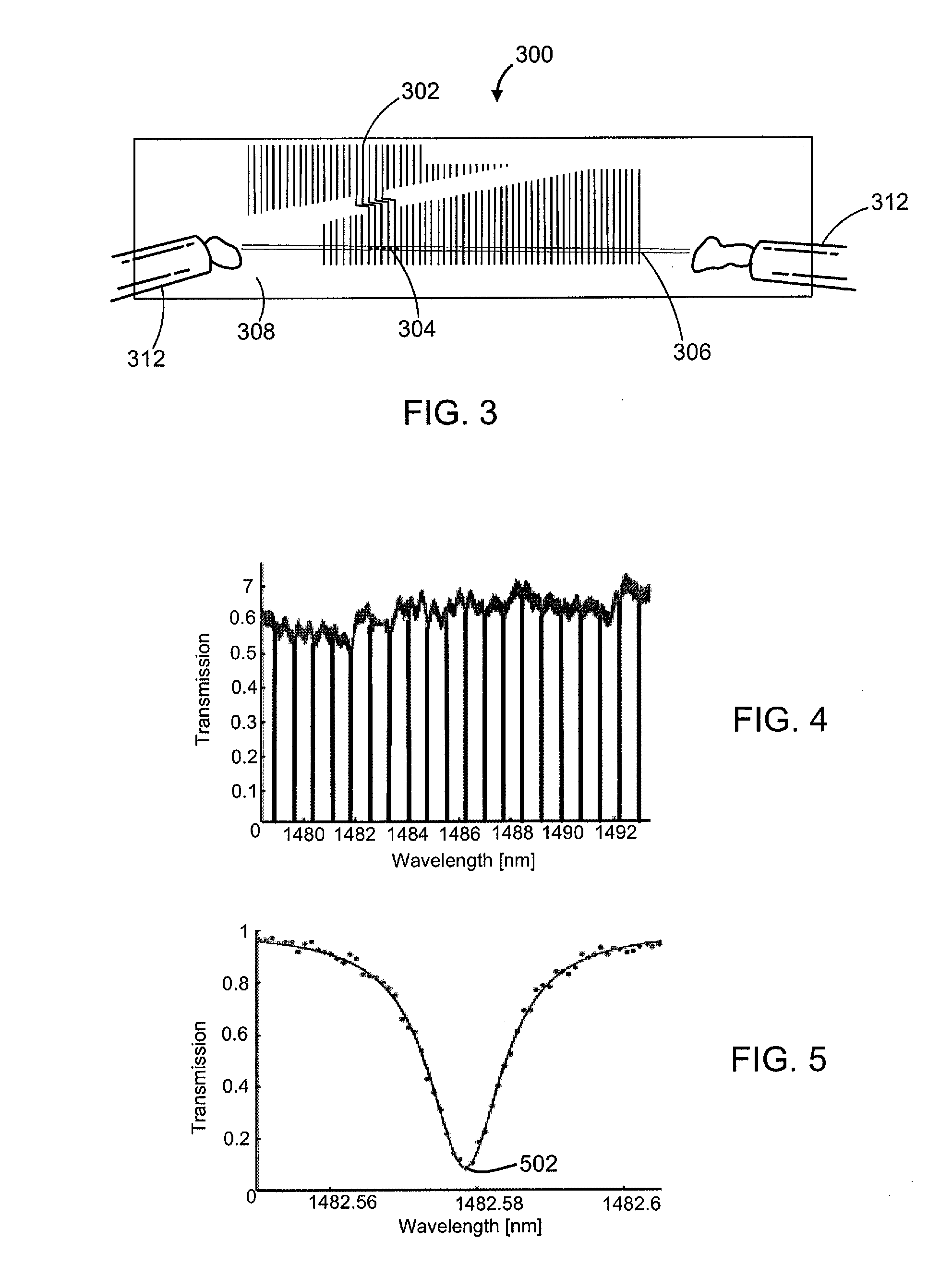Cavity-enhanced on-chip absorption spectroscopy
a technology of absorption spectroscopy and cavity enhancement, applied in the field of absorption spectroscopy, can solve the problems of destroying the advantage of being small, not reaching great efficiency of current spectroscopy devices using microresonators, and not realizing the full advantage of their small scal
- Summary
- Abstract
- Description
- Claims
- Application Information
AI Technical Summary
Benefits of technology
Problems solved by technology
Method used
Image
Examples
Embodiment Construction
[0020]There is described an optofluidic absorption spectroscopy apparatus in which a range of input optical waveforms (i.e. input light) are subjected to an analyte and the absorption spectrum is measured and calculated. The input light couples with a microresonator. The light resonates through the microresonator, thereby increasing the optical path length, increasing the duration the light is exposed to the analyte, and increasing the resulting degree of sensitivity in measuring the absorption spectrum.
[0021]An example of an on-chip optofluidic absorption spectroscopy apparatus 100 according to the present description is shown in FIG. 1. The optofluidic absorption spectroscopy apparatus 100 can comprise an optofluidic portion 101, which can comprise a coupling waveguide 102, a resonator 104, a fluidic channel 106, and a base 108. Further, the absorption spectroscopy apparatus 100 can also comprise a light source 110, an input coupling lens 112, an output coupling lens 114, and a ph...
PUM
 Login to View More
Login to View More Abstract
Description
Claims
Application Information
 Login to View More
Login to View More - R&D
- Intellectual Property
- Life Sciences
- Materials
- Tech Scout
- Unparalleled Data Quality
- Higher Quality Content
- 60% Fewer Hallucinations
Browse by: Latest US Patents, China's latest patents, Technical Efficacy Thesaurus, Application Domain, Technology Topic, Popular Technical Reports.
© 2025 PatSnap. All rights reserved.Legal|Privacy policy|Modern Slavery Act Transparency Statement|Sitemap|About US| Contact US: help@patsnap.com



